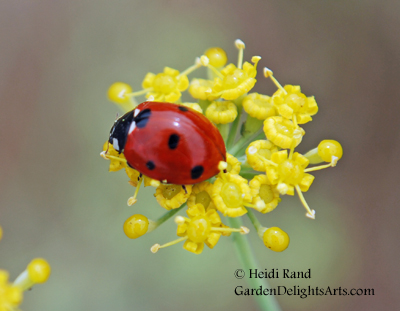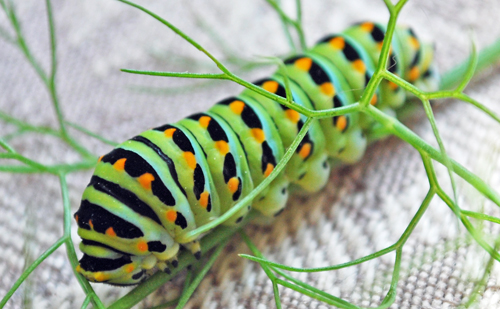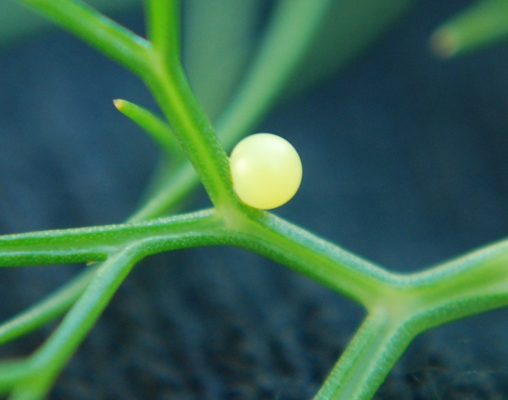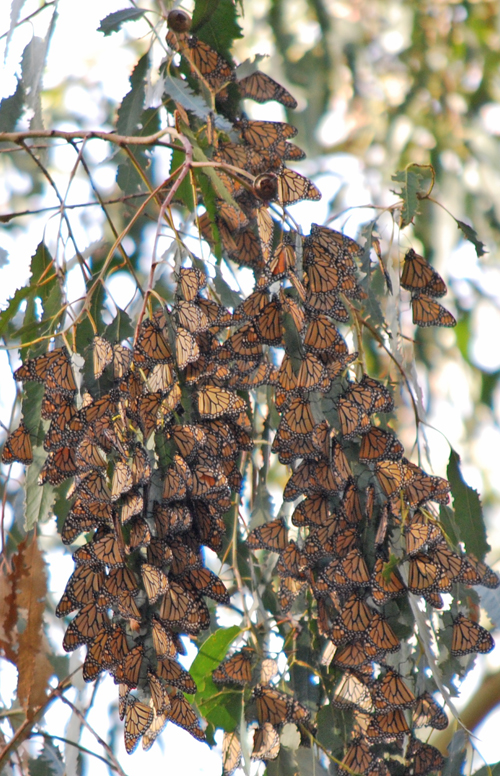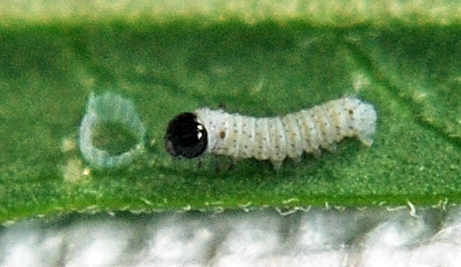Over the last few weeks more than ten of the anise swallowtail butterfly chrysalises that we’ve been sheltering in our butterfly nursery have emerged. These three beauties emerged in one day. We waited for the weather to improve, and took them out to the deck to release them. You can also see two batches of chrysalises still waiting to emerge. For some reason, possibly protection, they sometimes make their chrysalises right next to or on top of one another.
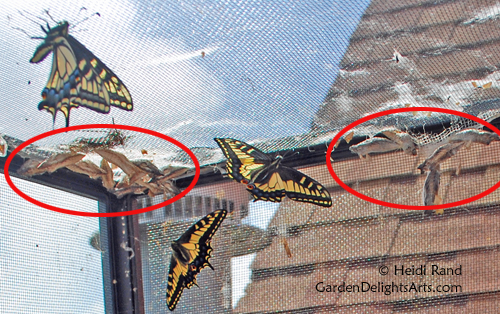
Anise swallowtails can remain in the chrysalis stage for years, and some of the ones that emerged have been gestating for more than two years. Every time we release a female I ask her to come back to our garden to lay eggs.

The native plant that anise swallowtails lay their eggs on is called yampah. George has some yampah in a pot, but it grows very slowly. A couple of years ago we were thrilled to find some eggs in our yampah. Here’s a picture I took. The egg is the tiny yellow dot near the center of the picture. It’s about the size of the head of a pin.
Since yampah is very hard to find in the wild around us (not much wild left hereabouts …), the anise swallowtails in our area have turned to the fennel plant to lay their eggs and as their larval food source. Fennel grows prolifically in vacant lots and along the highways. Many people cut it down as it gets rangy later in the summer, which is too bad, because they’re killing hundreds of swallowtail eggs and caterpillars. Anyway, to the point of this post .. drum roll please … I found three eggs on our fennel this morning! Here’s one.
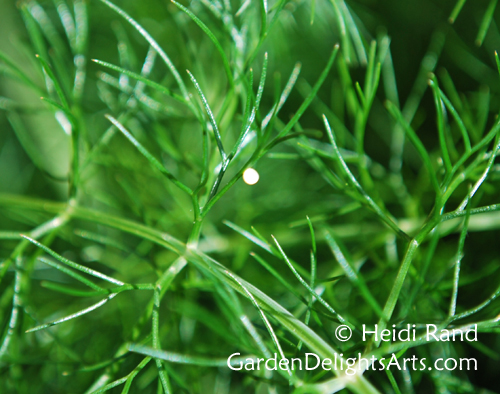
We released this female last Tuesday, maybe they are her eggs?

Have you seen many butterflies in your garden yet? Do you plant milkweed for monarchs or other plants to attract and feed butterflies?


